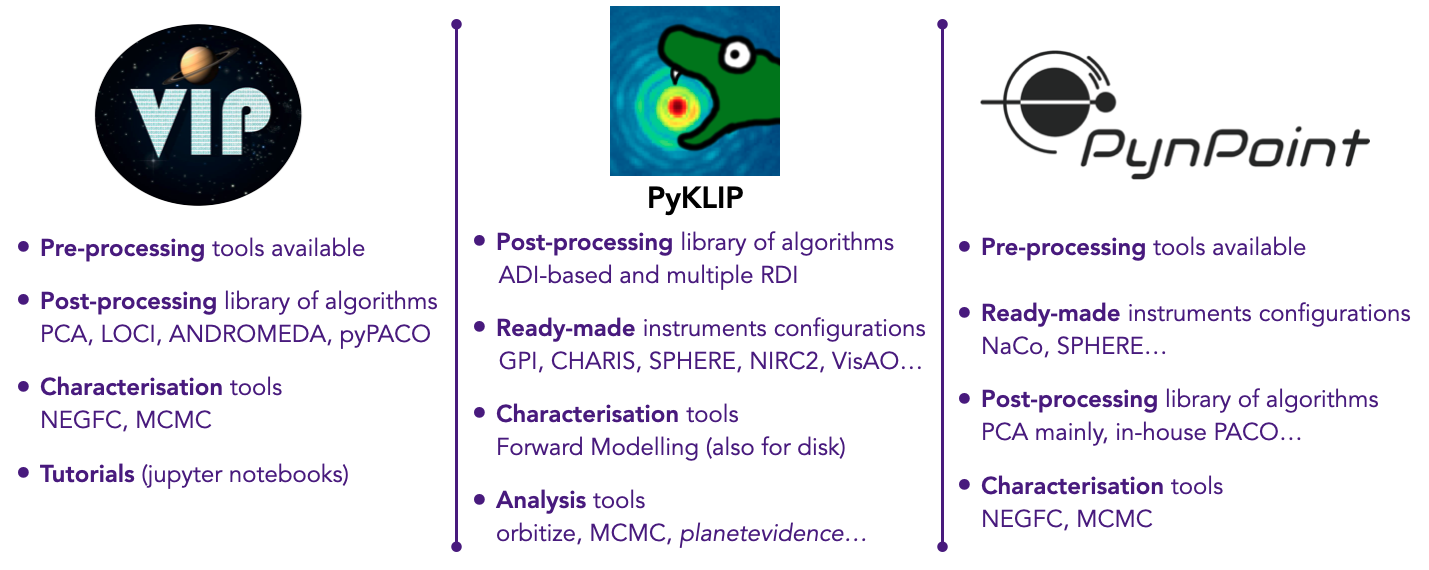Pipelines for HCI surveys
The following pipelines focus on the image reduction (or pre-reduction) stages: calibration, centering, image selection, etc.
- HC-DC (formerly SPHERE-DC): homogeneous data reduction dedicated to the VLT/SPHERE instrument. Also includes various ADI-based post-processing techniques from SpeCal. Developed by the SPHERE consortium Delorme et al., 2017.
- GPI pipeline and GPIES Data Cruncher: mainly developed to process Gemini-S/GPI data, the former focuses on the pre-processing steps, while the latter on the ADI-based post-processing. Developed by the Gemini-S/GPI consortium.
- GRAPHIC: Full high-contrast image processing pipeline, from pre-reduction to ADI-based post-processing. Developed by the Geneva Observatory: Hagelberg et al., 2015.
Open-source pipelines for HCI
- VIP: collaborative library of algorithms and general HCI toolkits, Gomez Gonzalez et al., 2017, Christiaens et al., 2022.
- PynPOINT: modular reduction and post-processing pipeline allowing for large HCI data management, Stolker et al., 2019.
- pyKLIP: collaborative library of algorithms and HCI analysis tools, (Wang et al., 2015).
Specific algorithms for HCI
- RSM: dedicated to point-source detection after applying various ADI-based post-processing techniques, Dalqvist et al., 2019.
- TRAP: dedicated to point source detection from pupil tracking data set, Samland et al., 2021
- HSR4HCI: half-sibling regression applied to high-contrast imaging, Gebhard et al., 2022
- LR maps: computes a likelihood ratio map after a ADI-based PCA subtraction of the image cube, Daglayan et al., 2022
- MAYONNAISE: dedicated to extended signal imaging from pupil tracking data set, Pairet et al., 2020
- MUSTARD: dedicated to extended signal imaging from pupil tracking data set, Juillard et al., 2023.
- Applefy: pipeline dedicated to produce unbiased detection limits for high-contrast images, Bonse et al., 2023
The image below summarizes the three main open-source pipelines (all written in python) that are available to the HCI community, with their respective functionalities highlighted. These three pipelines are highly complementary and are the result of a collabrative work within the HCI community. Please do not hesitate to contact the moderators of the pipelines if you have any suggestion for improvements.
